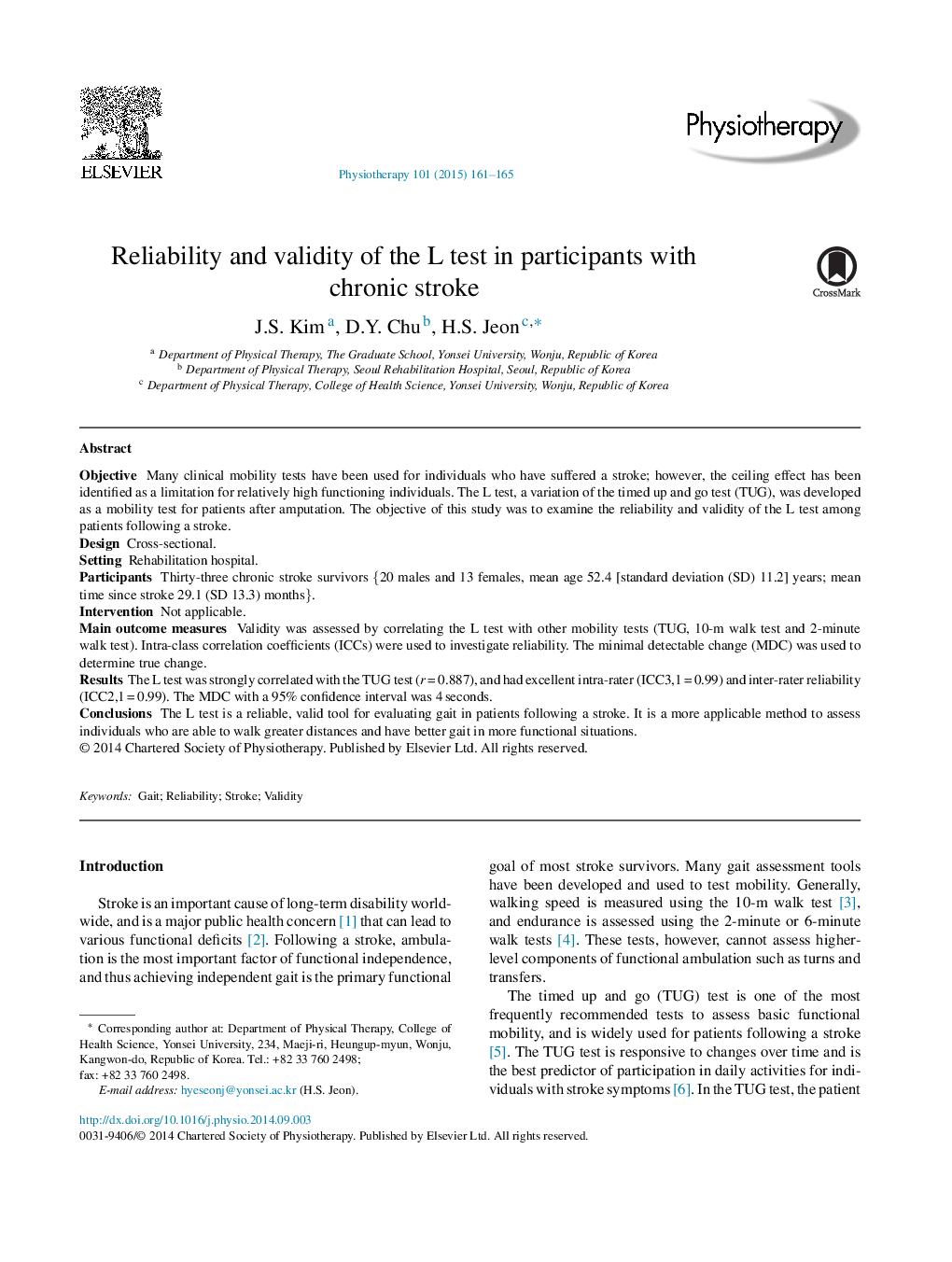| Article ID | Journal | Published Year | Pages | File Type |
|---|---|---|---|---|
| 5865110 | Physiotherapy | 2015 | 5 Pages |
ObjectiveMany clinical mobility tests have been used for individuals who have suffered a stroke; however, the ceiling effect has been identified as a limitation for relatively high functioning individuals. The L test, a variation of the timed up and go test (TUG), was developed as a mobility test for patients after amputation. The objective of this study was to examine the reliability and validity of the L test among patients following a stroke.DesignCross-sectional.SettingRehabilitation hospital.ParticipantsThirty-three chronic stroke survivors {20 males and 13 females, mean age 52.4 [standard deviation (SD) 11.2] years; mean time since stroke 29.1 (SD 13.3) months}.InterventionNot applicable.Main outcome measuresValidity was assessed by correlating the L test with other mobility tests (TUG, 10-m walk test and 2-minute walk test). Intra-class correlation coefficients (ICCs) were used to investigate reliability. The minimal detectable change (MDC) was used to determine true change.ResultsThe L test was strongly correlated with the TUG test (r = 0.887), and had excellent intra-rater (ICC3,1 = 0.99) and inter-rater reliability (ICC2,1 = 0.99). The MDC with a 95% confidence interval was 4 seconds.ConclusionsThe L test is a reliable, valid tool for evaluating gait in patients following a stroke. It is a more applicable method to assess individuals who are able to walk greater distances and have better gait in more functional situations.
